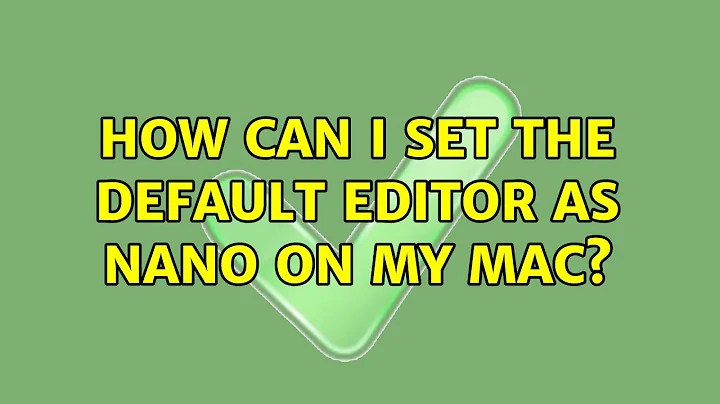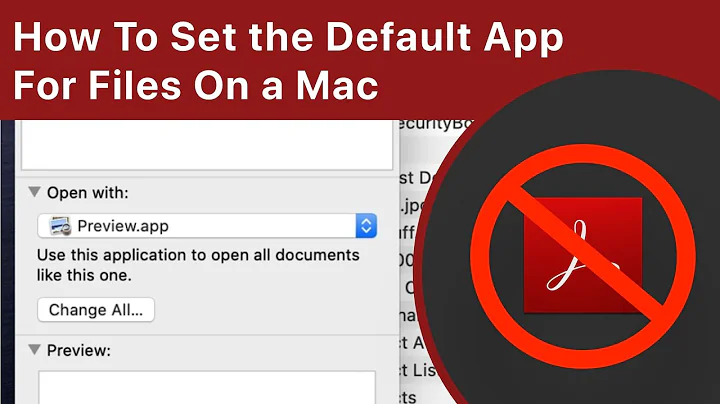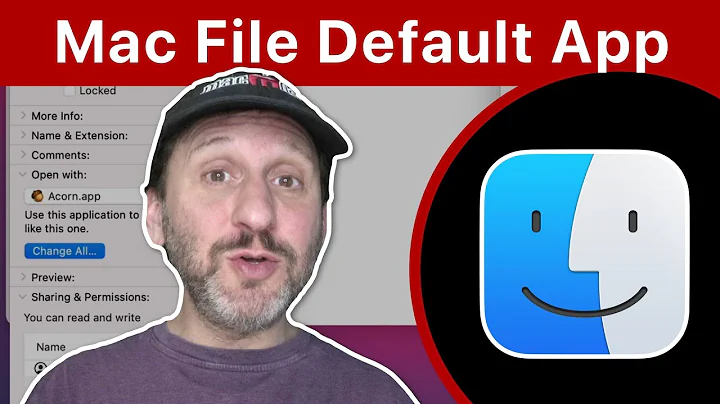How can I set the default editor as nano on my Mac?
Solution 1
Set the EDITOR and VISUAL environment variables to nano.
If you use bash on macOS, this is easiest done by editing your ~/.bash_profile file and adding the two lines
export EDITOR=nano
export VISUAL="$EDITOR"
to the bottom of the file. If the file does not exist, you may create it. If you use some other shell, modify that shell's startup files instead (e.g. ~/.zshrcforzsh`).
You should set both variables as some tools use one and others may use the other.
You will need to restart your terminal to have the changes take effect.
Solution 2
I had this same challenge when setting up my new MacBook Pro.
To elaborate more on Kusalananda's answer
To switch to your editor of choice (say nano) you will need to add the following lines to your ~/.zshrc file if your default shell is zsh or ~/.bash_profile if your default shell is bash:
export EDITOR=nano
export VISUAL="$EDITOR"
However, a simpler approach to do this will be to use the echo command to insert them into your ~/.zshrc file if your default shell is zsh:
echo 'export EDITOR=nano' >> ~/.zshrc
echo 'export VISUAL="$EDITOR"' >> ~/.zshrc
OR ~/.bashrc if your default shell is bash:
echo 'export EDITOR=nano' >> ~/.bash_profile
echo 'export VISUAL="$EDITOR"' >> ~/.bash_profile
Run the command below to activate the new configuration:
source ~/.zshrc
OR
source ~/.bash_profile
If you need to switch to other editors of choice you can replace nano with your preferred editor:
- Vim -
vim - Vi -
vi
That's all.
I hope this helps
Solution 3
The answer suggested by @Kusalananda doesnt work with a default install of Catalina.
Apple has changed the shell from bash to zsh as default in Catalina.
You need to rename your .bash_profile as .zprofile.
Then it works.
Related videos on Youtube
g_tech
Updated on September 18, 2022Comments
-
g_tech over 1 year
I have vim as default editor on my Mac and every time I run commands on Mac terminal, it automatically opens "vim".
How can I set up "nano" instead and make sure the terminal will open "nano" every time is needed?
-
Ben Racicot about 4 yearsThis is a great solution! How can we get the name of other editors for this purpose?
-
 Kusalananda about 4 years@BenRacicot The editors installed by default on macOS are
Kusalananda about 4 years@BenRacicot The editors installed by default on macOS arenano,vi/vim, anded(a very basic line-editor). If you install other editors for used in the shell, e.g. through Homebrew, then you would know what they are (since you installed them). -
Ben Racicot about 4 yearsYes, only the common issue online is swapping text edit as default for Sublime Text 3. However,
export EDITOR=Sublime Textdoes nothing. -
 Kusalananda about 4 years@BenRacicot Any command that uses e.g.
Kusalananda about 4 years@BenRacicot Any command that uses e.g.$EDITORwill use it as a command. You would set it to the command that you use to launch Sublime from the command line. If the command contains spaces, then it has to be quoted. -
Mike Eng over 3 years@BenRacicot this answer may help if you're trying to use a GUI application like Sublime Text stackoverflow.com/a/3539630/370407
-
 Kusalananda over 2 years@Mint It will depend on whatever shell the user is using, not what shell is the default on the system. Note that it is possible to install various shells on macOS, including moderns
Kusalananda over 2 years@Mint It will depend on whatever shell the user is using, not what shell is the default on the system. Note that it is possible to install various shells on macOS, including modernsbashreleases. I will however update my answer to say that it depends on the shell.




